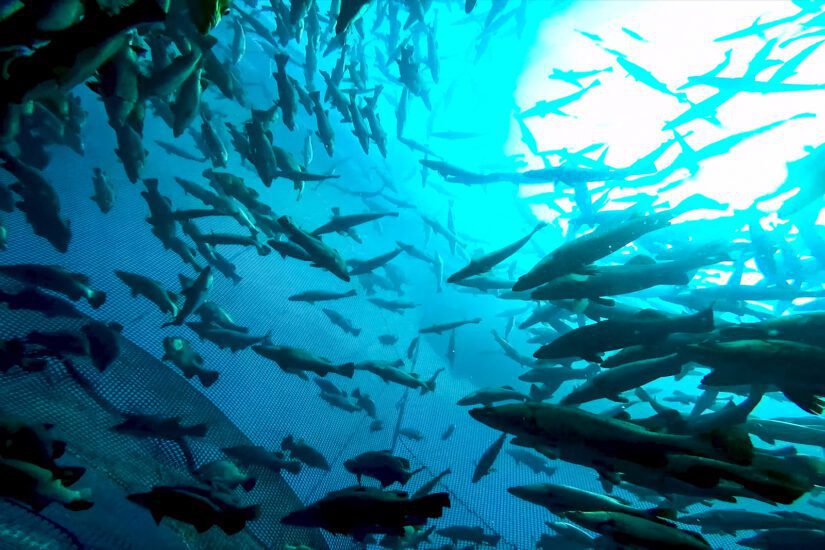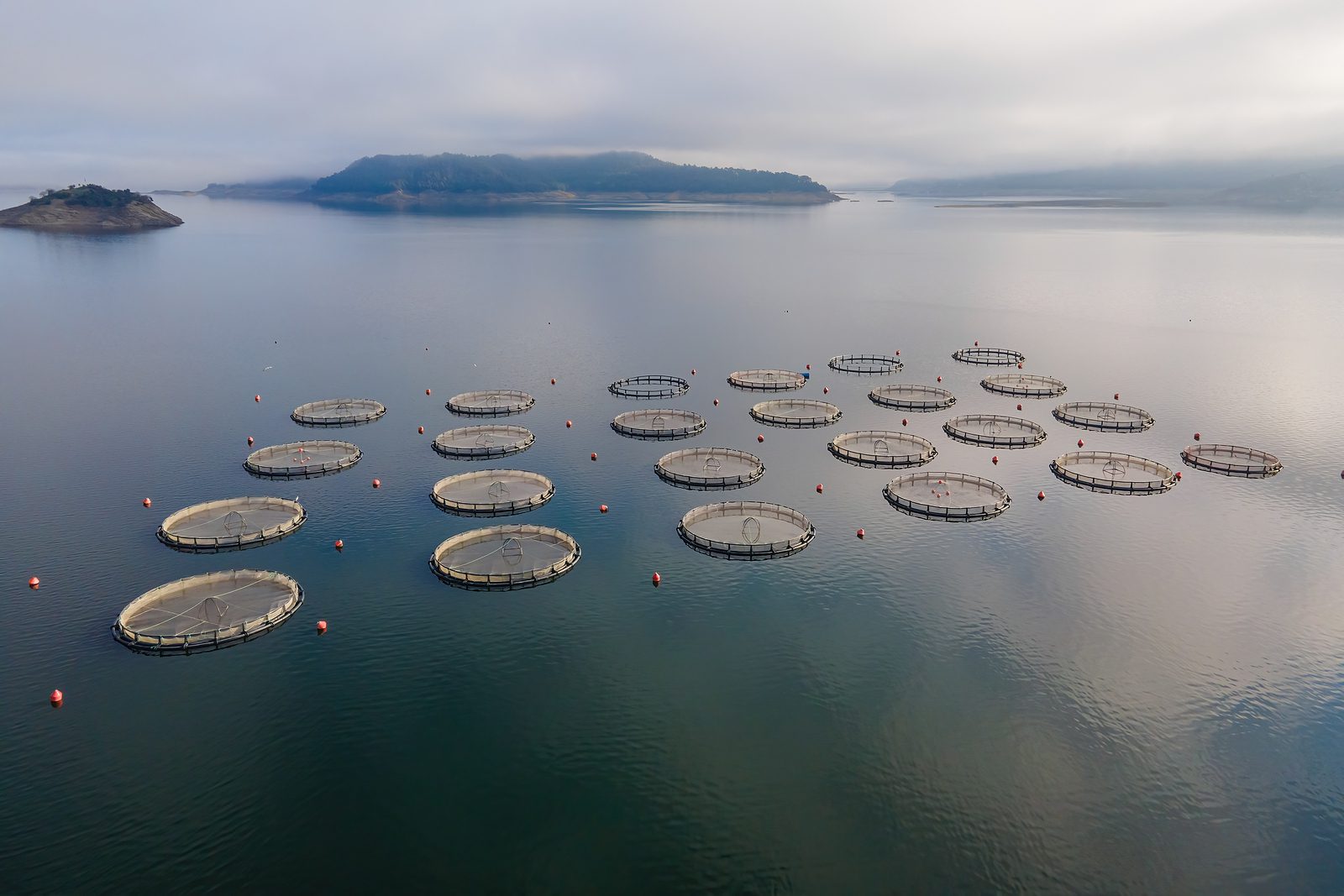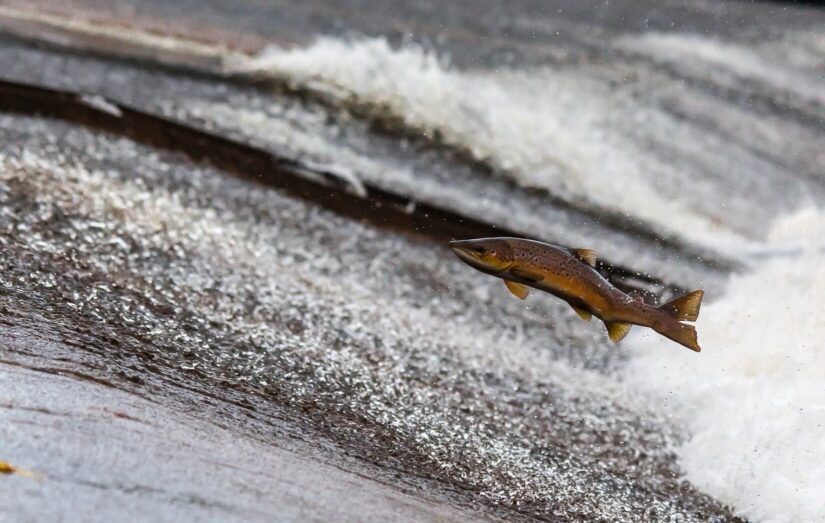What is aquaculture?
Aquaculture is the farming of aquatic organisms in marine or freshwater environments. Aquaculture occurs in all provinces in Canada, and the Yukon Territory. Aquaculture farms in Canada vary depending on the species being raised, the environment (marine or freshwater), and the farming system (land or water based). Most of Canada’s aquaculture farms are located on the east and west coasts, but there are freshwater farms found in central Canada.
There are approximately 45 different species of finfish, shellfish and marine algae commercially produced in Canada. Finfish represent over 75 per cent of Canada’s aquaculture industry. There are 26 species of finfish raised in Canada, but the most commonly produced are salmon, trout and Arctic char.

Life of a farmed finfish
In general, there are three stages to finfish farming. The first stage is the hatchery. Here, fish are bred, eggs are hatched, and fish are raised through their early life stages. Next, once the animals are mature enough, they are transferred to the farm where they are grown to market size. They are then slaughtered on-farm or transported to a processing facility, which then supplies retailers and grocery stores.
There are some small differences in how salmon, trout and Arctic char are raised for food.
Salmon
Salmon is farmed in British Columbia, New Brunswick, Nova Scotia, Newfoundland and Labrador, and Prince Edward Island. The most common method of salmon farming involves freshwater land-based hatcheries followed by saltwater net pens.
Salmon are hatched from eggs and raised in hatcheries for approximately one year until they are large enough to be transported to saltwater ocean farms. The farms are made up of a series of cages with nets to contain the fish. Salmon are raised in these ocean pens for approximately two years until they are large enough to be slaughtered (5-6 kg). Land-based farms are more rare, but are increasingly being advocated for.
Trout
Trout is farmed in every province in Canada, with Ontario being the largest producer. The majority of trout are raised in freshwater land-based hatcheries, and then are transported to freshwater net pens in lakes. Like ocean pens, these farms are made up of a series of cages with nets to contain the fish.
Arctic char
Arctic char is farmed in the Yukon Territory and across various Canadian provinces. Arctic char are raised in freshwater land-based systems. Eggs are hatched and remain at the hatchery until they reach 100 grams, which takes about one year. Then, the fish are transferred to tanks at grow-out facilities. An average tank is capable of holding 5000 fish. The fish continue to grow in the grow-out facilities, and reach market weight (1 – 2.5 kg) within 12 months.

What are the main concerns for finfish welfare?
As mentioned above, the majority of finfish farmed in Canada are salmon, trout and Arctic char. These fish belong to the salmonid family. Salmonids may face the following welfare issues:
- Sea lice:
Sea lice are common parasites of both wild and farmed marine fish. Salmon are highly susceptible to sea lice infection. Sea lice feed on the skin and blood of the fish. This leads to skin lesions, affecting fish health and increasing susceptibility to infections. Treatments used to control sea lice often require increased handling, which is stressful for the fish. Some of these treatments are chemicals, which can be toxic at incorrect doses, so there is a risk of fish mortality. Sea lice can also spread from fish farmed in ocean pens to wild fish in the area, reducing their fitness and welfare.
- High stocking density:
High stocking densities can create a stressful environment for fish. This can reduce their immune function, leaving them more susceptible to disease. Increased aggressive behaviours between fish can also occur, which can lead to injuries.
- Slaughter methods:
Rapid chilling with ice slurries is one way farmed fish are slaughtered (called ice-slurry slaughter). Fish are put into a non-oxygenated ice-water mixture where they remain until death. While the exact cause of death is not known, it is likely the fish die from asphyxiation – they are suffocating due to lack of oxygen to breathe. There are many stressors associated with this practice:
-
- Transport and handling prior to slaughter
- Rapid temperature change
- Death is not immediate, causing fish to suffer
Support a better life for farmed finfish
We know that fish are sentient, meaning they are capable of experiencing pain, fear, and distress. The BC SPCA supports the development of welfare-focused minimum standards for aquaculture, and are pleased to see that Canada’s first Code of Practice for Farmed Salmonids (salmon, trout, char) has been developed.
We are always working to build a better future for farm animals in B.C. and across Canada, but we need your help. Learn how you can take action for farm animals.

Additional resources
- Is the BC SPCA opposed to fishing?
- Position Statement on Fish and Aquatic Invertebrate Welfare
- Code of Practice for Farmed Salmonids
- Fun facts about fish
Subscribe to FarmSense
Are you passionate about farm animal welfare and want to help improve the lives of farmed fish? Use this form to sign up for our FarmSense e-newsletter and stay up-to-date on our initiatives!
